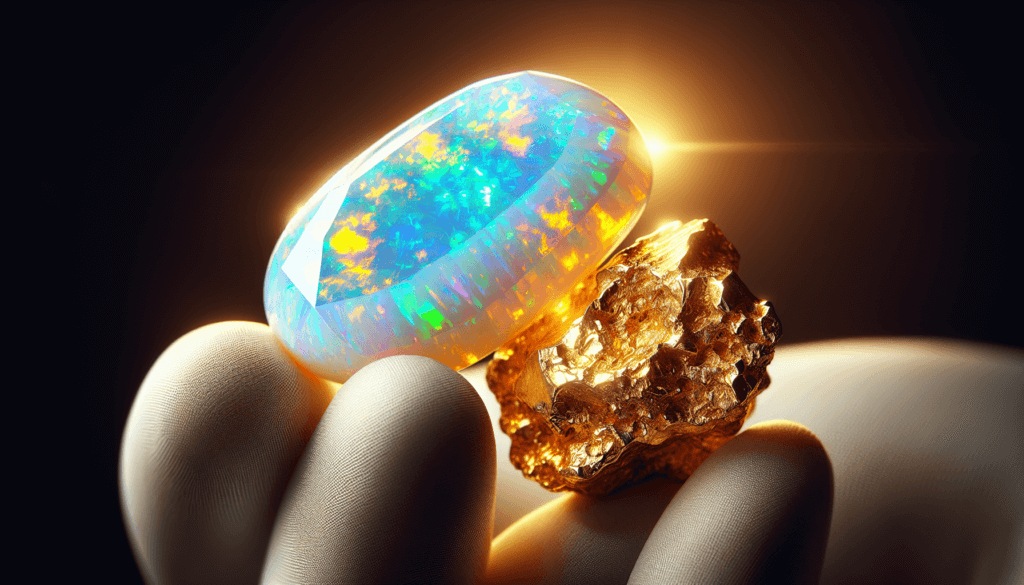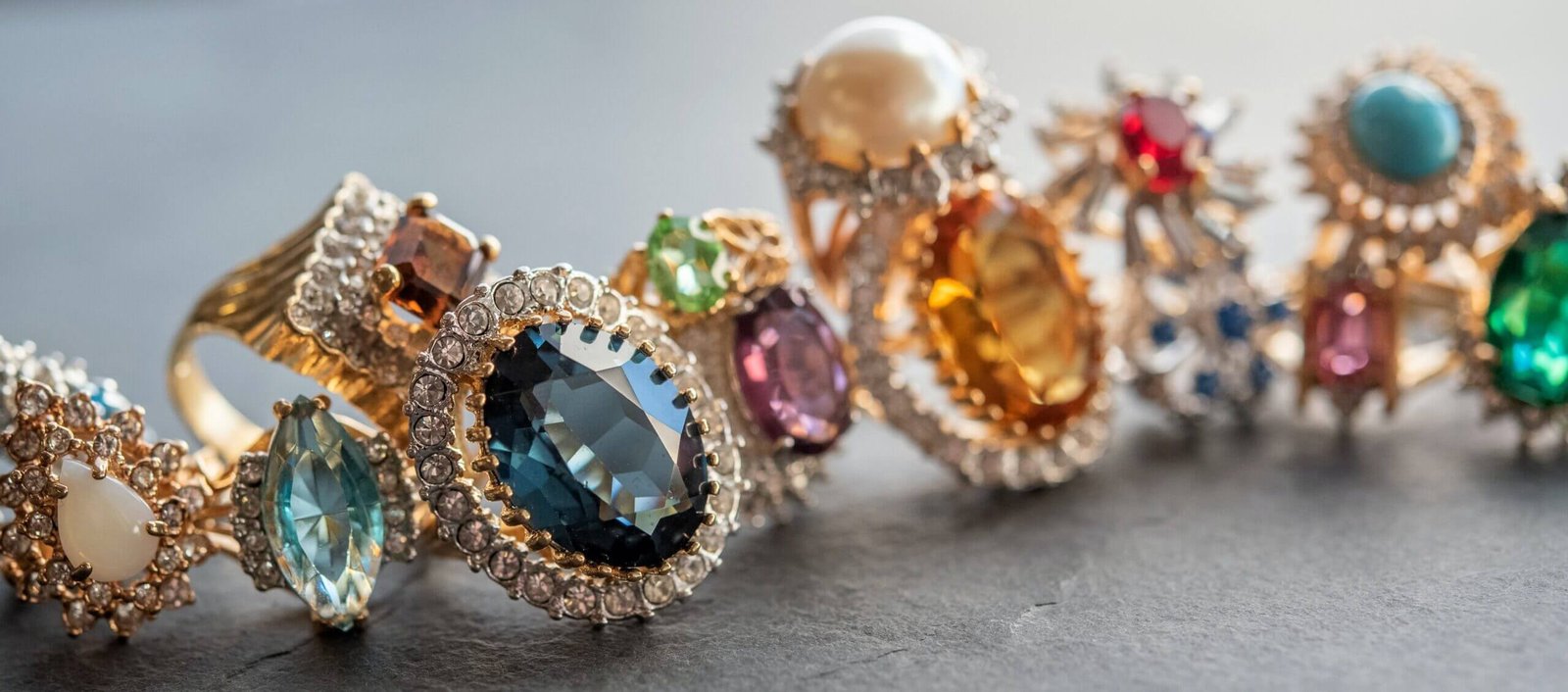You may be wondering about the priceless beauty that opals hold, and if their rarity makes them pricier than gold. While you might be familiar with gold’s widespread use in various industries such as jewelry, electronics, and even medicine, opals on the other hand, are quite a mystery to most. In “Is Opal More Expensive Than Gold?” we’ll match these two precious resources head-to-head, comparing their costs, their history, and the factors that influence their unique beauty and value. Prepare to immerse yourself in the mesmerizing world of shiny treasures and understand why opals might be worth more than gold in certain contexts.

Understanding Opal
Opal, a jewel of exceptional beauty, has fascinated humankind for centuries. Below, we explore its origination and usage, as well as its different types.
Origination and Mining of Opals
Original opals emerge from an intricate natural process involving seasonal rains. The rains saturate arid ground, carrying microscopic silica particles deep into the rock fissures. Once the water evaporates, it leaves a silica deposit that hardens over time and transforms into opal. Opals are mined through both open-cut and underground operations, depending largely on the depth and density of the gemstone deposits.
Types of Opals
There are several types of opals, categorized based on their color pattern and origin. These include black opals, which are known for their dark body tones that highlight the gem’s vibrant play-of-color. White opals, known for their light body tone and, often, more subdued color play, are another variant. Boulder opals, mined from ironstone boulders in Queensland, Australia, are also renowned for their colorful beauty.
Significance and Uses of Opals
Opals hold a significant place in many world cultures. The ancient Romans, for instance, valued opals for their brilliance and beauty. In modern times, opals are coveted for their spectacular color display, making them ideal for use in gemstone jewelry. Furthermore, opals are the birthstones for October, symbolizing faithfulness and confidence.
Understanding Gold
Gold is an element that needs little introduction. Read on to learn about its mining and various forms, as well as its significance and uses.
Origination and Mining of Gold
Gold forms deep within the earth’s crust under extreme heat and pressure. Groundwater often plays a key role in depositing gold into the rock where miners find it today. Gold mines exist around the world, with notable operations in South Africa, Australia, and America.
Different Forms of Gold
Gold is prized for its versatility; it can be drawn into wire, hammered into thin sheets, or cast into virtually any shape. Besides, gold can take three primary forms: Yellow gold, the most naturally occurring and pure form; White gold, an alloy made by combining gold with palladium, nickel or manganese; and Rose gold, a beautiful pinkish alloy created by mixing gold with copper.
Significance and Uses of Gold
Gold has been synonymous with wealth and power throughout human history, used as currency, in decorative arts, and in jewelry. Today, gold is also essential in dentistry, electronics, and aerospace applications.

Pricing Factor: Rarity
Rarity is a significant determinant of the price for both opals and gold. Here is how it influences both.
How Rarity Affects Pricing for Opal
Rarer opals, such as black and boulder opals, command higher prices due to their unique color play and limited availability. Additionally, the difficulty in mining these opals contributes to their high cost.
How Rarity Affects Pricing for Gold
The rarity of gold significantly affects its value. Easily accessible gold mines have been mostly depleted, making the extraction process more arduous and increasing the cost of gold.
Comparative Analysis of Rarity
While both opals and gold are rare, their scarcity manifests differently. The rarity of opals lies in their unique color play and limited availability, while the scarcity of gold stems from the depleteness and difficulty in extracting it from the earth.
Pricing Factor: Quality
Determining Quality in Opal
The quality of an opal is assessed based on several factors, including color, pattern, clarity, and carat weight. The brighter and more varied the color display, the higher the quality. Furthermore, an opal free from imperfections will be deemed higher quality and, therefore, more valuable.
Determining Quality in Gold
The quality of gold is measured by its fineness. The purest gold is measured as 24 carats, and any gold product that is less than 24 carats indicates it has been mixed with other metals.
Comparative Analysis of Quality
Both opal and gold’s quality assessments center around purity, but in the case of opal, other attributes such as color display and pattern are also key determining factors.

Pricing Factor: Demand and Supply
Demand and Supply of Opal
The demand for opal is driven by its appeal as a gemstone for jewelry. A limited supply, coupled with strong demand, pushes the price of opal higher.
Demand and Supply of Gold
Gold is always in high demand. Its diverse uses, from jewelry to industrial applications, combined with a governed supply, contribute to its consistent high pricing.
Comparative Analysis of Demand and Supply
Both opal and gold enjoy strong demand. However, while opals are primarily used in jewelry, gold has more diverse applications, bolstering its consistent demand.
Market Trends and Influences
Current Market Trends for Opal
The market for opals currently displays an increasing consumer preference for black and boulder opals, attributed to their vibrant color play. As a result, these types of opals command higher prices.
Current Market Trends for Gold
Gold continues to be viewed as a safe-haven asset, especially in times of economic uncertainty. This perception consistently keeps gold’s demand and price high.
Influential Factors Affecting Prices
In both cases, factors such as changing tastes in jewelry, global economic conditions, and supply constraints directly impact the prices of opals and gold.
Investment Perspective
Investing in Opal vs. Gold from a Long-Term Perspective
Opal can make for an intriguing investment due to its uniqueness and beauty. However, its value is subjective and based on factors like color and clarity. On the other hand, gold is universally valuable, making it a stable long-term investment.
Factors to Consider When Investing in Opal or Gold
When considering investing in either opal or gold, it’s vital to understand the market trends and factors influencing their prices. Gold tends to be a safer bet due to its steady demand and universal value.
The Risks and Potential Returns of Investing in Opal and Gold
Investing in either opal or gold comes with risk due to price volatility. However, the potential returns can be high if the investor understands the market and makes informed decisions.
Examination of Historical Prices
Comparison of Historical Price Trends for Opal
Historically, the price of opal has shown fluctuations based on factors like market demand, mining output, and quality. Certain types like the black and boulder opals have seen a steady increase in price due to their rarity and unique beauty.
Comparison of Historical Price Trends for Gold
Throughout history, gold has remained a consistently high-priced commodity. Its value has steadily increased, correlating with economic inflation and currency valuations.
Factors Influencing Historical Price Fluctuations for both
The price fluctuations for both opal and gold can be attributed to market demand, rarity, quality, and global economic conditions.
Future Price Predictions for Opal and Gold
Potential Influences on Future Opal Prices
Future opal prices will depend upon factors like mining output, market demand, and the continued popularity of different opal types.
Potential Influences on Future Gold Prices
Gold’s future prices could be influenced by factors such as global economic trends, market demand, mining output, and central bank policies.
Comparative Analysis of Future Price Predictions
The future pricing of both opal and gold will remain subject to demand and supply dynamics, economic outlooks, and their perceived value in the market.
Conclusion: Is Opal more expensive than gold?
Factors Contributing to the Current Price of Opal and Gold
Factors from rarity, quality, demand, supply, to market trends and economic conditions all contribute to the current price of both opal and gold.
Comparative Analysis of Gold and Opal Prices
Comparatively, it can be hard to definitively say whether opals are more expensive than gold. While high-quality opals can command high prices, gold’s universal value and consistent demand usually place its price quite high.
Discussion on Whether Opal is More Expensive than Gold
Conclusively, it could be argued that while opals may at times fetch higher prices due to their uniqueness and rarity, gold’s value is much more stable and consistently high due to its universal demand and versatility in use.



